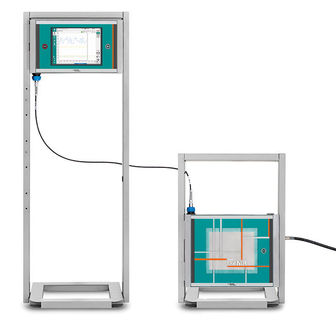Empty sella syndrome
Classification & external resources
| ICD-9
| 253.8
|
| DiseasesDB
| 31523
|
| MeSH
| D004652
|
Empty sella syndrome (abbreviated ESS) is a disorder that involves the sella turcica, a bony structure at the base of the brain that surrounds and protects the pituitary gland. ESS is a condition that is often discovered during tests for pituitary disorders, when radiological imaging of the pituitary gland reveals a sella turcica that appears to be empty.
Classification
There are two types of ESS: primary and secondary.
- Primary ESS happens when a small anatomical defect above the pituitary gland increases pressure in the sella turcica and causes the gland to flatten out along the interior walls of the sella turcica cavity. Primary ESS is associated with obesity and high blood pressure in women. The disorder sometimes results in a build-up of fluid pressure inside the skull and the pituitary gland may be smaller than usual.
- Secondary ESS is the result of the pituitary gland regressing within the cavity after an injury, surgery, or radiation therapy. Individuals with secondary ESS due to destruction of the pituitary gland have symptoms that reflect the loss of pituitary functions, such as the ceasing of menstrual periods, infertility, fatigue, and intolerance to stress and infection.
Associated conditions and diagnosis
In children, ESS may be associated with early onset of puberty, growth hormone deficiency, pituitary tumors, or pituitary gland dysfunction. MRI scans are useful in evaluating ESS and differentiating it from other disorders that produce an enlarged sella.
Treatment
Unless the syndrome results in other medical problems, treatment for endocrine dysfunction associated with pituitary malfunction is symptomatic and supportive. In some cases, surgery may be needed.
Prognosis
ESS is not a life-threatening illness.
| Endocrine pathology: endocrine diseases (E00-35, 240-259) |
|---|
| Thyroid | Hypothyroidism (Iodine deficiency, Cretinism, Congenital hypothyroidism, Goitre, Myxedema) - Hyperthyroidism (Graves disease, Toxic multinodular goitre, Teratoma with thyroid tissue or Struma ovarii) - Thyroiditis (De Quervain's thyroiditis, Hashimoto's thyroiditis, Riedel's thyroiditis) - Euthyroid sick syndrome |
|---|
| Pancreas | Diabetes mellitus (type 1, type 2, coma, angiopathy, ketoacidosis, nephropathy, neuropathy, retinopathy) - Hypoglycemia - Hyperinsulinism - Zollinger-Ellison syndrome |
|---|
| Parathyroid | Hypoparathyroidism (Pseudohypoparathyroidism) - Hyperparathyroidism (Primary, Secondary, Tertiary) |
|---|
| Pituitary | Hyperpituitarism (Acromegaly, Hyperprolactinaemia, SIADH) - Hypopituitarism (Simmonds' disease/Sheehan's syndrome, Kallmann syndrome, Growth hormone deficiency, Diabetes insipidus) - Adiposogenital dystrophy - Empty sella syndrome |
|---|
| Adrenal | Cushing's syndrome (Nelson's syndrome, Pseudo-Cushing's syndrome) - CAH (due to 21-hydroxylase deficiency) - Hyperaldosteronism (Conn syndrome, Bartter syndrome) - Adrenal insufficiency (Addison's disease) - Hypoaldosteronism |
|---|
| Gonads | ovarian dysfunction (Polycystic ovary syndrome, Premature ovarian failure) - testicular dysfunction (5-alpha-reductase deficiency) - general (Hypogonadism, Delayed puberty, Precocious puberty) |
|---|
| Other | Autoimmune polyendocrine syndrome - Carcinoid syndrome - Short stature (Laron syndrome, Psychogenic dwarfism) - Gigantism - Androgen insensitivity syndrome - Progeria - Multiple endocrine neoplasia (1, 2) |
|---|
|







